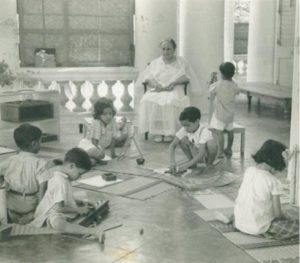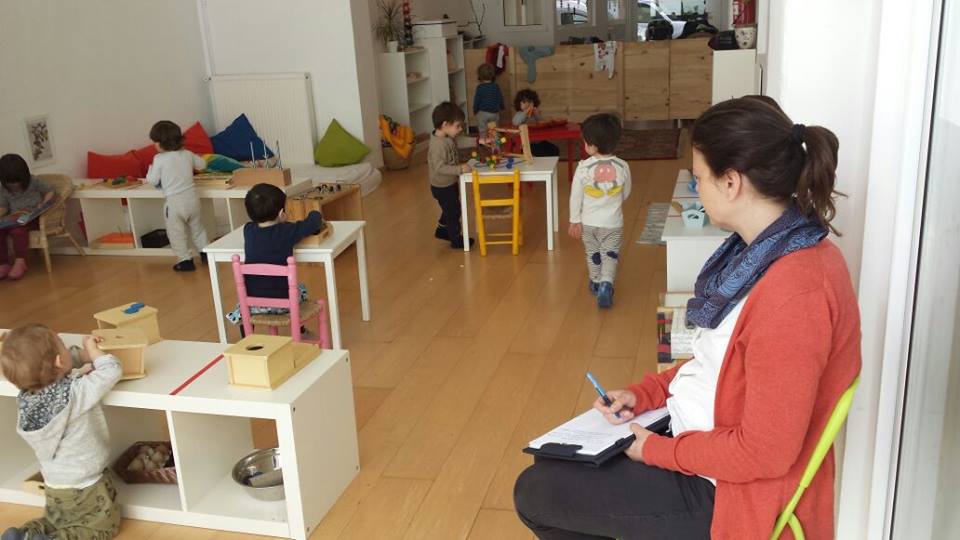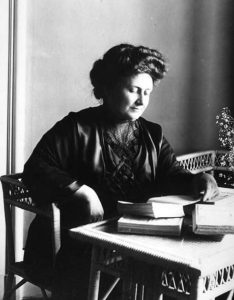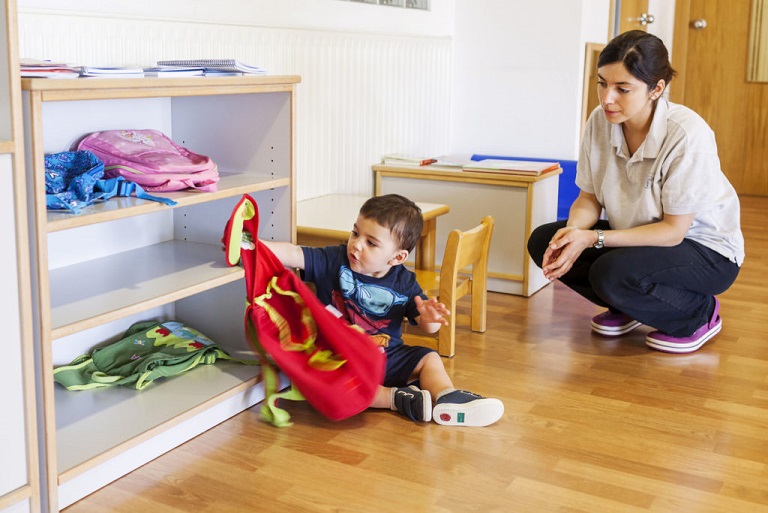Observation
Many times, we think the children behave, act, think and are attracted to specific things that we consider childish (colors, lights, music and sounds, cartoons…) whereas that is just our prejudices and assumptions the adult makes about the children.
We think that children act according to their age, based on stereotypes and without stopping and looking at what the child really can do at that age, and then we get surprised by how much they know and are able to do.
We are going to talk about observation in the Montessori environment, but same wise, it’s like that how one must observe in a Pikler environment, when parents come to the Pikler nest, they have to learn to observe and behave like a Montessori Guide would do on a Montessori environment.
 In a Montessori environment, a very important role of the adult is to do observation of the children and to be able to do it appropriately, needs to first: get rid of all previous prejudices and knowledge he/she thinks he/she knows about children and childhood.
In a Montessori environment, a very important role of the adult is to do observation of the children and to be able to do it appropriately, needs to first: get rid of all previous prejudices and knowledge he/she thinks he/she knows about children and childhood.
When the adult observes, he/she must do it with the humble sight of someone learning for the first time, because things always change, and the child who is acting a certain way, is not the same child who once was, not even yesterday. There is no place for assumption, nor prejudice.
This observation, Must be done from the neutral perspective, without emotions, values or personal judgement, meaning: if the child is making a movement of the hand in which the hand gets close to a glass, the adult must not think that the child tried to pick up the glass and failed, but instead, describe in the written register, what movement did the child make.
Doctor Maria Montessori discovered by observing the children, many things, among them:
- Children learn all their knowledge from their surroundings and the younger they start, more able and more knowledge they will get.
- The period from birth to 6 years old, is when children form their idea of the culture they live in as well as fixing their own character.
- Is not the adult the one creating the child’s character, but the same child who, by the experiences he/she lives on daily basis, creates, modifies and settles in it’s own final behavior.

Una estudiante de Guía Montessori Observa a los niños y registra la actividad. En una Comunidad Infantil en Zaragoza - All children around the world, without exception, go through the Sensitive Periods and the Human Tendencies ( the first refer to windows of opportunity that make learning something effortlessly and with a lot of attraction, and the latter refer to ways of development in evolution that children go through and relate to the same that humanity went through while developing in the prehistoric age).
- When the child is working and learning, is able to focus deeply and uninterrupted, and because of their attraction to learning, is better an indirect teaching than a direct one.
There is several ways to observe, and the adult must do these three in a Montessori and Pikler environment:
- Introspective: The adult will question his/her own knowledge, values, actions, thoughts and emotions, and cross reference them with his/her previous experiences, results and consecuences.
- Direct: when the adult makes and observation of the child in the environment and writes down all the data.
- Indirect: When the adult makes a consultation on her books, albums which have the knowledge he/she needs and relates this to the observations he/she has made to learn in which moment of development the child is at that precise moment.
 To really be able to make a real and objective observation, the adult must follow two rules:
To really be able to make a real and objective observation, the adult must follow two rules:
- Eliminate all obstacles: The adult must be present within himself/herself, and, as mentioned previously, clear his/her mind of assumptions, emotions, values before starting the observation. The adult must not be a distraction for the child; he/she needs to be in silent and stay still, avoiding interfering in the activity (unless said activity is a potential threat for the child or the ones surrounding him/her) and write down all the observations made.
- Reflex afterwards: Once the observations has been made, the adult must take all the stimuli surrounding the action the child made and relate them to the action; as well as check how his/her feelings, and thought were previous to the action and correlate them to the ones afterwards, to observe the change.
To finish, we leave you some things to take in consideration when making an observation:
- Keep your mind open.
- Keep your mind still.
- Don’t judge.
- Be a scientific observer.
- Be objective.
- Watch and listen.
- Observe with interest, respect, responsibility and knowledge.
- Practice, practice, practice.

Doctor Silvia Dubovoy compacts all this knowledge in one simple sentence:
“First observe, wait a bit and only if necessary, intervene”.

